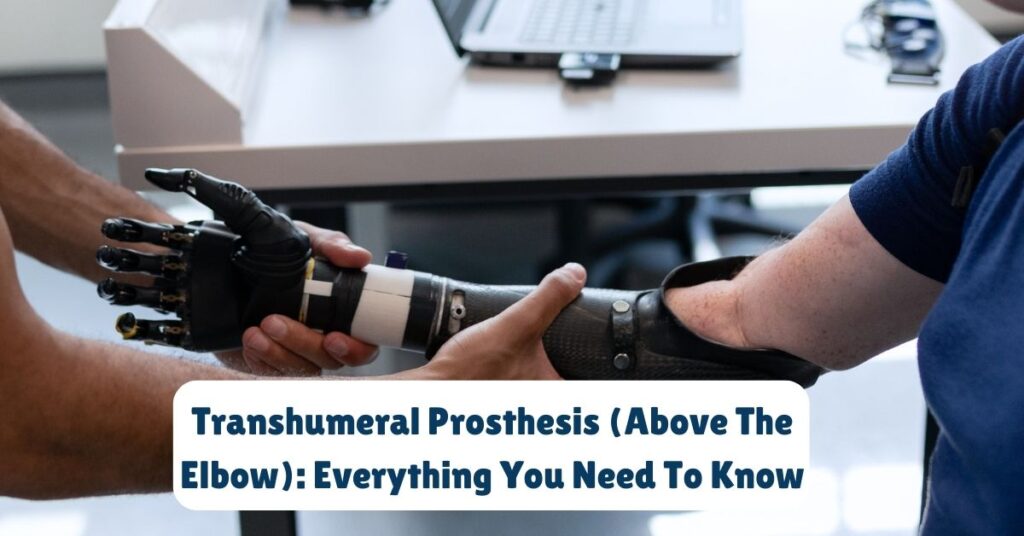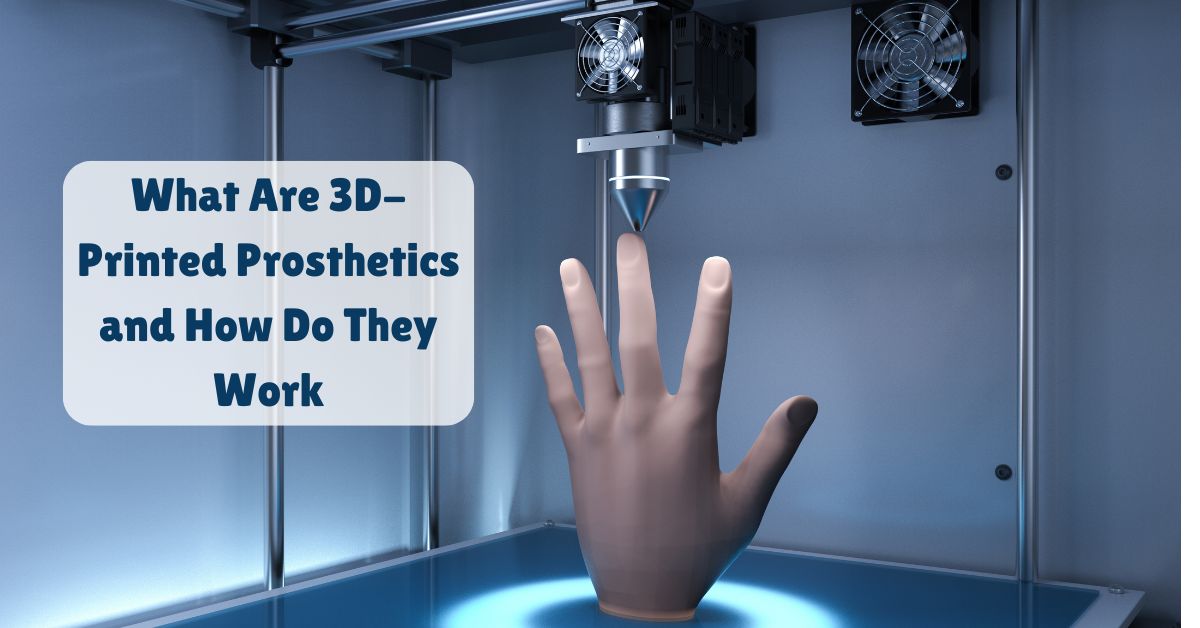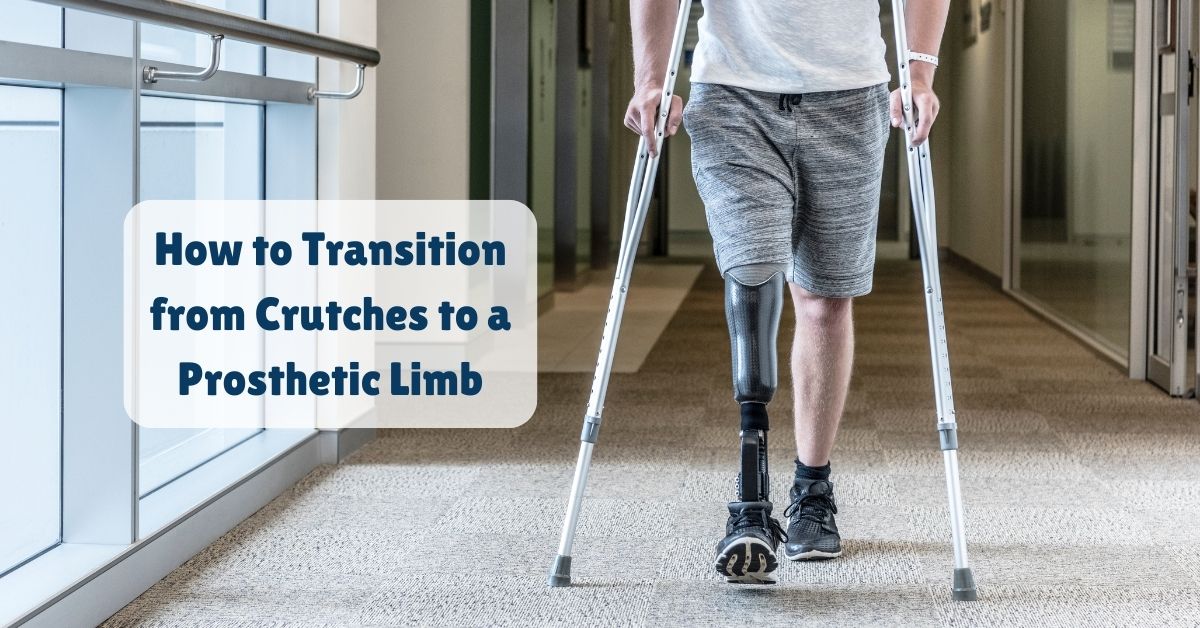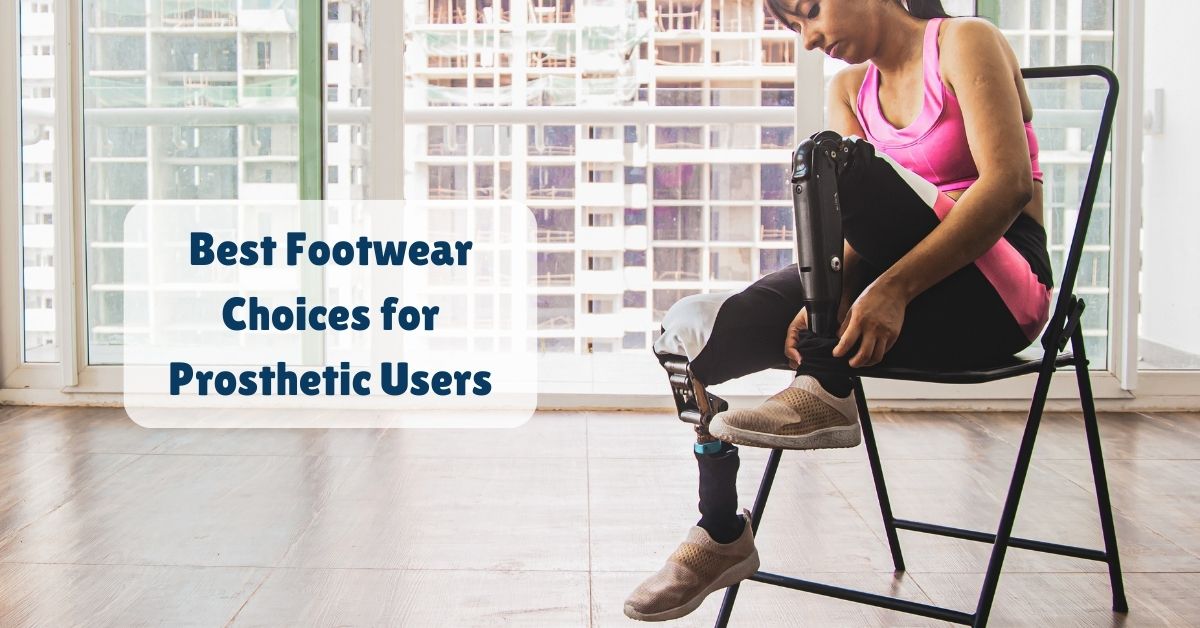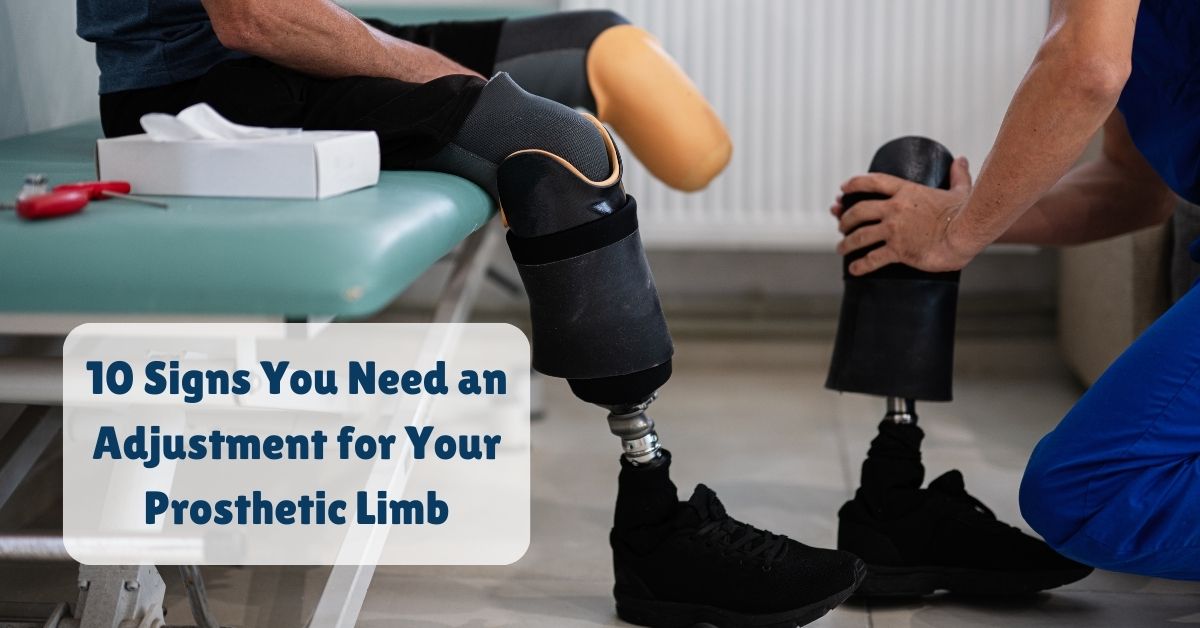A transhumeral prosthesis, or above-the-elbow prosthesis, is a type of artificial limb designed to replace an arm lost above the elbow. These advanced devices allow individuals to regain the ability to perform everyday tasks and live active, fulfilling lives. In this guide, we’ll explore everything you need to know about transhumeral prosthesis, including their components, how they work, the fitting process, and tips for choosing the right one for your needs. Whether you’re considering a prosthesis for yourself or a loved one, this information will help you make an informed decision and better understand this life-changing technology.
What Is Transhumeral Prosthesis?
A transhumeral prosthesis is a sophisticated artificial limb designed for individuals who have undergone an amputation above the elbow. This type of prosthesis extends from the upper arm to the hand and is engineered to replicate the function and appearance of a natural arm.
Comprising advanced components like a socket, elbow joint, and terminal device (hand or hook), the transhumeral prosthesis enables a range of movements, including bending and rotating the elbow, as well as grasping objects.
These prostheses are often customized to fit the unique needs of each user, ensuring optimal comfort and functionality. The use of durable materials and cutting-edge technology helps users regain independence, perform daily tasks, and maintain an active lifestyle, significantly enhancing their quality of life.
What Are The Main Components of Transhumeral Prosthesis?
A transhumeral prosthesis consists of several essential components that work together to mimic the functionality of a natural arm. These main components include:
1. Socket
The socket is custom-molded to the individual’s residual limb to ensure a secure and comfortable fit. It serves as the primary interface between the user’s arm and the prosthesis, distributing weight and pressure evenly. A well-fitting socket is crucial for comfort, functionality, and preventing skin irritation or injury.
2. Elbow Joint
The elbow joint in a transhumeral prosthesis allows for bending and extending the arm, replicating the natural movement of a human elbow. Advanced elbow joints can include locking mechanisms for stability and may be powered or mechanically controlled to provide a range of motion that supports various daily activities.
3. Suspension System
The suspension system, often consisting of straps, harnesses, or liners, secures the prosthesis to the user’s body. It ensures that the prosthesis remains in place during movement, providing stability and control. A well-designed suspension system is essential for maintaining proper alignment and enhancing the overall functionality of the prosthesis.
4. Forearm Section
The forearm section connects the elbow joint to the terminal device, acting as the intermediary segment of the prosthesis. This component can be designed to match the user’s natural arm length and appearance, contributing to the aesthetic appeal of the prosthesis while maintaining structural integrity and functionality.
5. Terminal Device
The terminal device is the functional end of the prosthesis, which can be a hand, hook, or specialized tool depending on the user’s needs. It allows for grasping and manipulating objects, facilitating tasks such as holding utensils, writing, or performing various occupational activities. Advanced terminal devices offer precise control and versatility.
6. Control System
The control system of a transhumeral prosthesis may include cables, switches, or myoelectric sensors that respond to the user’s muscle signals. This system translates muscle movements or electrical signals into prosthetic actions, providing the user with intuitive and precise control over the prosthesis. Advanced control systems enhance the prosthesis’s responsiveness and usability.
What Are The Different Types of Transhumeral Prostheses?
There are several types of transhumeral prostheses available, each designed to meet different needs and preferences of users. Here are the main types:
1. Body-Powered Prostheses
Body-powered prosthesis use a system of cables and harnesses controlled by the user’s body movements. These prostheses are durable, lightweight, and offer good sensory feedback. They are typically more affordable and require less maintenance compared to other types, making them a practical choice for many users.
2. Externally Powered (Myoelectric) Prostheses
Externally powered or myoelectric prostheses use electrical signals from the user’s muscles to control the prosthesis. Sensors in the socket detect muscle contractions and translate them into movements of the prosthetic limb. These prostheses provide more natural and precise control, allowing for a wider range of motion and functionality.
3. Hybrid Prostheses
Hybrid prostheses combine elements of both body-powered and externally powered prostheses. For instance, a user might control the elbow joint with a body-powered mechanism while the terminal device is controlled by myoelectric signals. This combination offers a balance of reliability and advanced functionality.
4. Passive Prostheses
Passive prostheses are primarily designed for cosmetic purposes and do not offer active movement. They are often used to improve the appearance of the amputated limb and can be customized to closely match the user’s natural arm. While they do not provide functionality, they can be helpful for social and psychological well-being.
5. Activity-Specific Prostheses
These prostheses are designed for specific activities, such as sports, swimming, or playing musical instruments. They are customized to meet the demands of particular tasks, providing enhanced performance and durability. Users often have an activity-specific prosthesis in addition to their daily-use prosthesis to accommodate different needs.
What Is The Process For Fitting Transhumeral Prosthesis?
The process for fitting a transhumeral prosthesis involves several key steps to ensure a proper fit and optimal functionality:
1. Initial Consultation
The process begins with an initial consultation between the user and a prosthetist. This meeting includes a review of the user’s medical history, lifestyle, and specific needs. The prosthetist discusses various prosthetic options and determines the most suitable type for the individual.
2. Measurement and Evaluation
Accurate measurements of the residual limb are taken to create a custom socket. The prosthetist evaluates the limb’s shape, size, and skin condition to ensure that the prosthesis will fit comfortably and securely. This may involve using 3D scanning or traditional casting techniques.
3. Socket Creation
A custom socket is fabricated based on the measurements and evaluations. This step often includes creating a test socket, which is a temporary model used to assess the fit and comfort. Adjustments are made as needed to ensure proper alignment and function.
4. Trial Fitting
The user tries on the test socket or initial prosthetic components to evaluate the fit, comfort, and functionality. The prosthetist makes any necessary adjustments to improve the fit and address any issues such as pressure points or alignment problems.
5. Component Selection and Assembly
Once the socket fit is confirmed, the appropriate prosthetic components, such as the elbow joint, forearm section, and terminal device, are selected and assembled. The prosthetist ensures that all components work together harmoniously and meet the user’s specific needs.
6. Final Fitting and Adjustments
The user receives the final prosthesis and undergoes a thorough fitting process. The prosthetist makes any final adjustments to optimize comfort, alignment, and functionality. The user practices using the prosthesis and receives training on how to operate and care for it.
7. Follow-Up and Maintenance
Regular follow-up appointments are scheduled to monitor the user’s progress, make any necessary adjustments, and address any concerns. The prosthetist provides ongoing support and maintenance to ensure the prosthesis continues to function effectively and comfortably.
How Does A Transhumeral Prosthesis Enhance Daily Functionality?
A transhumeral prosthesis, designed for individuals who have lost their arm above the elbow, significantly enhances daily functionality through various features and advancements. Here’s how it contributes to improving quality of life:
1. Restoring Basic Movements
A transhumeral prosthesis is designed to replicate essential arm movements such as reaching, grasping, and lifting. Advanced models feature articulated joints and motorized components that enable smooth and natural motion. This helps users perform daily tasks more effectively, from retrieving items to performing chores, enhancing overall functionality.
2. Improved Grip
Modern transhumeral prosthesis are equipped with versatile hands or hooks that offer various grip patterns. These can be customized for different activities, enabling users to hold objects securely, manipulate tools, and perform detailed tasks. This increased dexterity significantly improves the ability to engage in daily and recreational activities.
3. Enhanced Control and Coordination
With advancements like myoelectric controls, transhumeral prosthesis now offer improved responsiveness and control. These systems interpret electrical signals from the user’s residual muscles to manage the prosthesis’s movements. This allows for more precise actions, such as adjusting grip strength and hand positioning, making everyday tasks easier and more efficient.
4. Customization for Specific Needs
Prosthetists can tailor transhumeral prosthesis to meet individual requirements. Customization can include adjustments for specific tasks, such as heavy lifting or fine motor skills. By addressing personal needs and preferences, these prostheses provide a more functional and comfortable experience, ensuring that users can perform their desired activities effectively.
5. Increased Independence
The ability to perform a range of tasks independently is a key benefit of transhumeral prostheses. Users can engage in daily routines, hobbies, and work activities with greater ease, reducing their reliance on others. This enhanced autonomy contributes to a more self-sufficient lifestyle and improved overall quality of life.
6. Enhanced Comfort and Fit
Comfort is a crucial factor in the effectiveness of a transhumeral prosthesis. Modern designs include features such as adjustable sockets, soft padding, and ergonomic shapes to minimize discomfort and skin irritation. A well-fitting prosthesis ensures users can wear it for extended periods without experiencing pain or fatigue.
7. Integration with Assistive Technologies
Some transhumeral prosthesis are designed to work with assistive technologies like smartphone apps. These integrations allow users to control and adjust their prosthesis settings in real-time, offering additional customization. This technology enhances the user experience by providing more precise control and adapting to different activities and environments.
8. Psychological Benefits
Using a transhumeral prosthesis can positively impact mental health by boosting self-esteem and body image. The ability to perform tasks independently and participate in activities can lead to increased confidence and a better sense of self-worth. These psychological benefits contribute to overall well-being and a more positive outlook on life.
What Are The Best Practices For Maintaining A Transhumeral Prosthesis?
Maintaining a prosthesis is essential for ensuring its longevity, functionality, and comfort. Here are some best practices for proper care and maintenance for transhumeral prosthesis:
1. Regular Cleaning
Keep the prosthesis clean by following the manufacturer’s guidelines. Regularly wash the socket, liner, and any removable parts with mild soap and water. This helps prevent skin irritation and reduces the buildup of bacteria or odor. Avoid using harsh chemicals that could damage the materials.
2. Inspect for Wear and Tear
Frequently check the prosthesis for signs of wear and tear. Inspect the socket, joints, and components for cracks, loose parts, or other damage. Addressing these issues early can prevent more significant problems and ensure the prosthesis continues to function correctly.
3. Proper Storage
When not in use, store the prosthesis in a cool, dry place. Avoid exposing it to extreme temperatures, humidity, or direct sunlight, which can cause damage to the materials. Proper storage helps maintain the integrity of the prosthesis and prolongs its lifespan.
4. Adjust and Fit Regularly
Ensure that the prosthesis remains well-fitted and properly aligned. Regular adjustments may be needed to accommodate changes in body size or shape. An ill-fitting prosthesis can cause discomfort, affect functionality, and lead to skin issues, so periodic check-ups with a prosthetist are essential.
5. Check and Replace Components
Some parts of the prosthesis, like liners or silicone sleeves, may need regular replacement due to wear. Follow the manufacturer’s recommendations for replacement intervals and consult with your prosthetist for advice on when to replace specific components to ensure optimal performance.
6. Lubricate Moving Parts
Apply lubricant to moving parts of the prosthesis as recommended by the manufacturer. Proper lubrication ensures smooth movement and reduces friction, which can prevent premature wear and maintain the efficiency of the prosthetic limb.
7. Maintain Skin Health
Take care of the skin under the prosthesis by keeping it clean and dry. Use moisture-wicking liners if recommended, and check regularly for any signs of irritation or sores. Healthy skin is crucial for comfort and effective use of the prosthesis.
8. Follow Manufacturer’s Instructions
Adhere to the care instructions provided by the manufacturer. Each prosthesis may have specific maintenance requirements based on its design and materials. Following these guidelines ensures that the prosthesis remains in good working condition and performs as intended.
9. Seek Professional Advice
Consult with your prosthetist regularly to address any issues or concerns with the prosthesis. They can provide guidance on maintenance, make necessary adjustments, and offer solutions for any problems you might encounter. Regular professional check-ups help maintain optimal performance and comfort.
10. Educate Yourself
Stay informed about new developments and best practices related to prosthetic care. Understanding the latest advancements and maintenance techniques can help you make informed decisions and ensure the best care for your prosthesis.
By following these best practices, you can ensure that your transhumeral prosthesis remains functional, comfortable, and durable, enhancing your daily life and overall well-being.
Conclusion
Transhumeral prosthesis are invaluable devices that empower individuals with elbow amputations to lead fulfilling and active lives in a natural way. By understanding the components, types, fitting process, functionalities, maintenance practices, and challenges associated with transhumeral prosthesis, we can better support and advocate for the needs of prosthesis users. Through advancements in prosthetic technology and compassionate care, we can continue to enhance the lives of individuals with limb loss and promote inclusivity in society. When it comes to finding a reliable transhumeral prosthesis manufacturer company in India, it is essential to prioritize quality, innovation, and user-specific customization.
Always consult with a healthcare professional or prosthetist to determine the best prosthetic options for your specific needs and circumstances.
Frequently Asked Questions (FAQs) About Transhumeral Prosthesis
1. How long does it take to get used to a transhumeral prosthesis?
Getting used to a transhumeral prosthesis can vary from person to person. It generally takes a few weeks to a few months, depending on factors like the individual’s overall health, motivation, and the type of prosthesis.
2. Can I wear my transhumeral prosthesis all day?
Yes, most users can wear their prosthesis all day. However, it’s important to start slowly and gradually increase wear time to avoid discomfort or skin irritation.
3. How do I clean and maintain my transhumeral prosthesis?
Regular cleaning and maintenance are crucial. Clean the socket daily with mild soap and water, and check all components for wear and tear. Regular check-ups with your prosthetist are also important for adjustments and repairs.
4. Will I be able to perform all my daily activities with a transhumeral prosthesis?
A well-fitted and properly functioning transhumeral prosthesis can significantly improve your ability to perform daily activities. However, some tasks may require practice and adaptation.
5. How often do I need to replace parts of my transhumeral prosthesis?
The frequency of replacing parts depends on usage and the type of prosthesis. Typically, sockets may need replacing every few years, while other components like the elbow joint or hand may last longer with proper care.
6. What should I do if I experience discomfort or pain with my prosthesis?
If you experience discomfort or pain, contact your prosthetist immediately. They can make adjustments to improve the fit and alleviate any issues.
8. How much does a transhumeral prosthesis cost?
The cost of a transhumeral prosthesis varies widely based on the type, materials, and technology used. Consult with your prosthetist and insurance provider to understand the costs and coverage options.
9. Can children use transhumeral prosthesis?
Yes, children can use transhumeral prosthesis. Pediatric prostheses are designed to accommodate growth and activity levels, and regular adjustments are necessary as the child grows.
10. How do advancements in prosthetic technology affect the usability of transhumeral prostheses?
Advancements in technology, such as improved materials and more sophisticated control systems, continually enhance the usability, comfort, and functionality of transhumeral prostheses, offering users greater independence and a higher quality of life.and protection for you to make informed decisions about your health and mobility.

